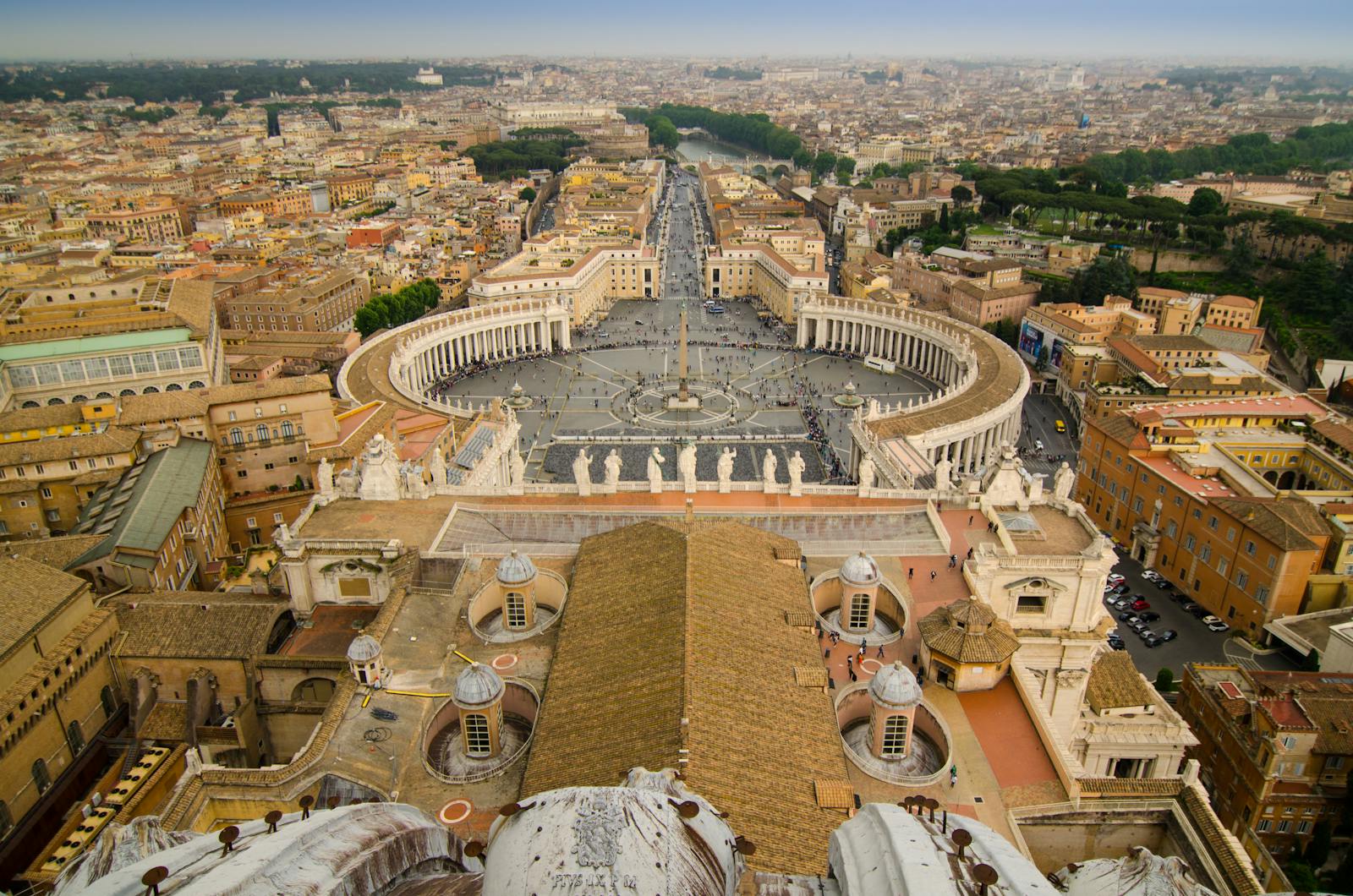Vatican City Revealed: Exploring its Top Landmarks and Monuments
Vatican City, the smallest independent state in the world, has a rich and fascinating history that dates back centuries. Located within the city of Rome, Italy, Vatican City is the spiritual and administrative headquarters of the Roman Catholic Church. Its history is intertwined with the history of the Catholic Church, making it a place of immense religious and cultural significance.
The origins of Vatican City can be traced back to the 4th century when the Emperor Constantine legalized Christianity and built the Basilica of St. Peter on Vatican Hill. This basilica, which still stands today, became the focal point of the growing Christian community and the symbol of the Vatican’s power.
Over the centuries, the Vatican’s influence continued to expand. Popes became not only spiritual leaders but also political figures, wielding significant power and authority. In the 14th century, Pope Nicholas V commissioned the construction of the Apostolic Palace, which is now the residence of the Pope and the administrative center of the Vatican.
During the Renaissance period, the Vatican experienced a period of great cultural and artistic flourishing. Pope Julius II, known as the “Warrior Pope,” commissioned renowned artists such as Michelangelo and Raphael to decorate the Vatican with magnificent frescoes and sculptures. The Sistine Chapel, painted by Michelangelo, is a masterpiece of Renaissance art and a must-see attraction for visitors to Vatican City.
In 1929, Vatican City officially became an independent state through the Lateran Treaty signed between the Holy See and Italy. This treaty ensured the sovereignty of the Vatican and granted it territorial independence. Today, Vatican City is a separate entity from Italy and is governed by the Pope, who serves as the head of state.
Visiting Vatican City allows you to delve deep into its fascinating history. The Vatican Museums house an extensive collection of art and artifacts spanning centuries, providing a glimpse into the cultural heritage of the Catholic Church. The St. Peter’s Basilica, with its awe-inspiring architecture and religious significance, is a testament to the enduring legacy of Vatican City.
To fully appreciate the history of Vatican City, it is recommended to take a guided tour. These tours provide in-depth historical information and take you to the major historical attractions, ensuring you don’t miss any significant sites. It is also important to check the opening and closing times of each attraction to plan your visit accordingly.
Saint Peter’s Basilica – The Largest Church in the World
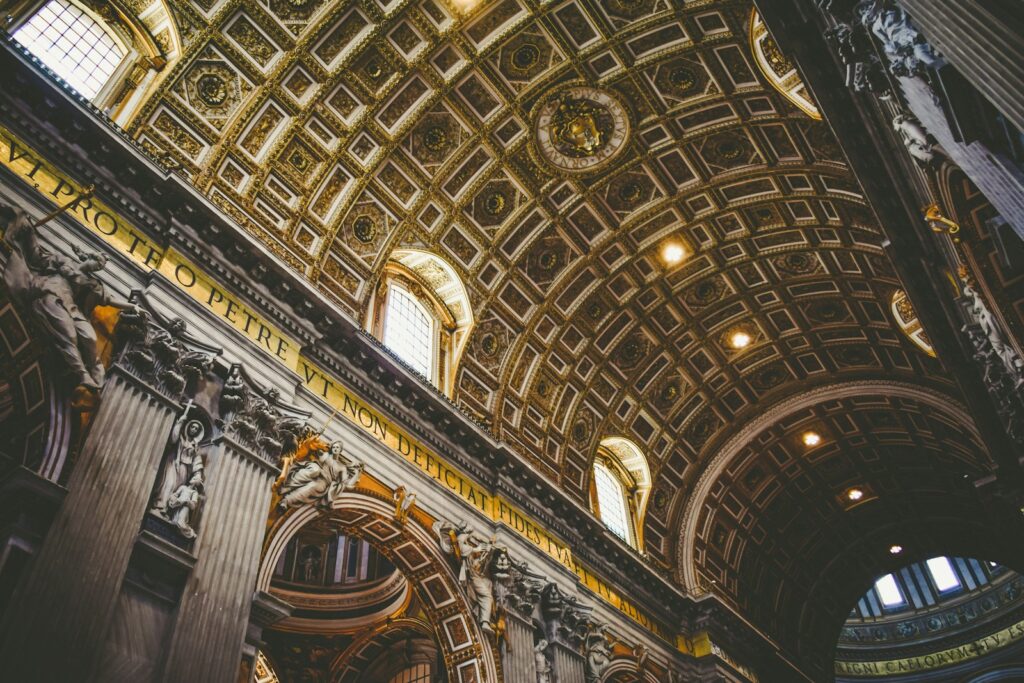
Saint Peter’s Basilica, located in Vatican City, is a must-visit attraction for anyone traveling to Rome or Vatican City. This Renaissance-style church is known for its breathtaking beauty and grandeur, showcasing the best of architectural and artistic masterpieces.
Upon entering the basilica, visitors are immediately struck by the sheer magnificence of every inch of the building. Unlike other cathedrals or churches that may appear similar, Saint Peter’s Basilica stands out as a unique and awe-inspiring structure. It is like visiting ten grand cathedrals all in one location, leaving visitors in awe of its splendor.
The interior of the basilica is nothing short of extraordinary. Every detail is meticulously crafted, from the intricate designs on the walls and ceilings to the stunning sculptures and artwork adorning the space. It is a place where art and spirituality seamlessly blend, creating a truly mesmerizing experience.
One of the highlights of visiting Saint Peter’s Basilica is the opportunity to witness the Pope himself. Every Sunday, the Pope appears on the balcony to greet the crowds gathered in St. Peter’s Square. It is a unique chance to catch a glimpse of the leader of the Catholic Church and feel the sense of unity and devotion that permeates the atmosphere.
For those looking for a more immersive experience, it is possible to climb to the top of the dome of Saint Peter’s Basilica. While it may require some physical effort, the panoramic views of Vatican City and Rome from the top are well worth it. The dome itself is a masterpiece, designed by Michelangelo and finished by Carlo Maderno.
The historical significance of Saint Peter’s Basilica cannot be understated. It is one of the largest churches in the world and sits atop Vatican Hill, overlooking the city. Construction of the new basilica began in 1506 and was not completed until 1626. The architectural beauty of the basilica has served as inspiration for many other cathedrals around the world, making it an iconic symbol of faith and artistry.
Beyond its architectural marvels, Saint Peter’s Basilica also holds religious significance. It is believed to be the final resting place of St. Peter, the apostle of Jesus Christ. The tomb of Pope Pius XI, who wanted to be buried near St. Peter, is also located within the basilica. Excavations in the 1940s revealed a vast network of burial chambers, further supporting the belief that St. Peter was buried in this sacred place.
Visiting Saint Peter’s Basilica can be a crowded affair, especially during peak tourist seasons. However, there are ways to avoid the crowds, such as going early in the morning or booking a guided tour with skip-the-line tickets. Regardless of the crowds, the beauty and spiritual significance of this extraordinary church are sure to leave a lasting impression on all who visit.
The Sistine Chapel – The Impressive Sculptures
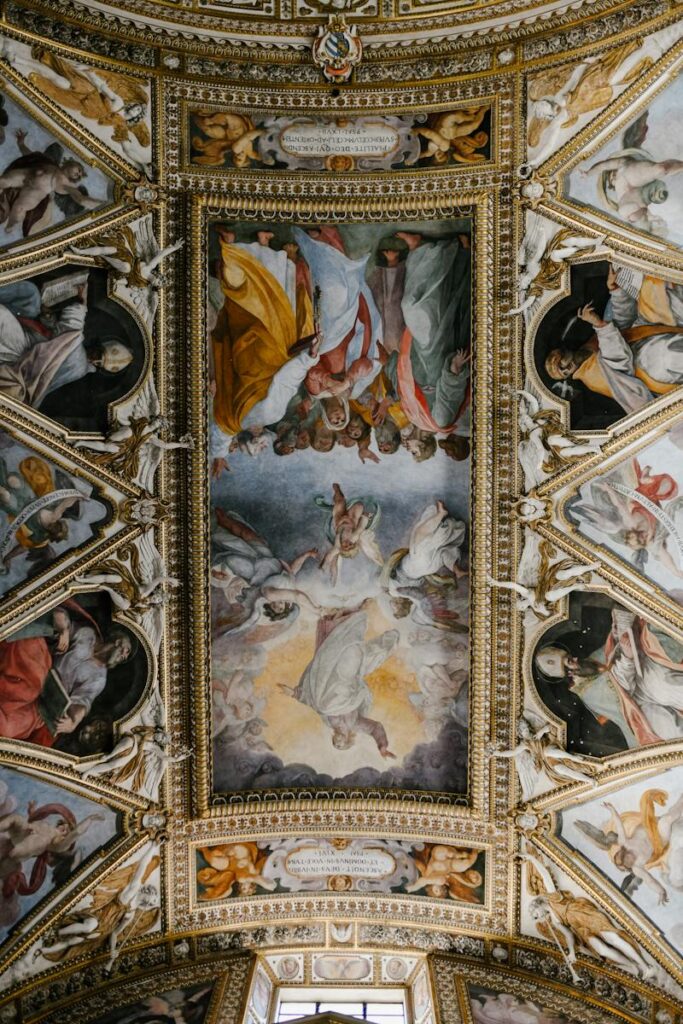
The Sistine Chapel, located within the Vatican City, is undoubtedly one of the most iconic and significant cultural treasures in the world. Dating back to the 15th century, this renowned chapel serves as the official residence of the Pope and is also the location where Cardinals gather to elect a new Pope.
While the exterior of the Sistine Chapel may appear simple compared to other Italian churches of the same era, its true beauty lies within its walls and ceilings. The interior of the chapel is adorned with vibrant frescoes that are considered the pinnacle of Renaissance painting. These magnificent artworks were created by renowned artists such as Michelangelo, Sandro Botticelli, and Pinturicchio.
Michelangelo’s contribution to the Sistine Chapel is undoubtedly its most famous feature. In the 16th century, he completed the breathtaking frescoes on the chapel’s ceiling, which are regarded as one of the most important pieces of art ever created. The ceiling depicts various scenes from the Old Testament, including the creation of Adam and the story of Noah’s Ark. The sheer scale and detail of Michelangelo’s work are truly awe-inspiring, with each fresco showcasing his immense talent and artistic vision.
The frescoes on the side walls of the Sistine Chapel also deserve recognition. Painted by other esteemed artists of the time, these large frescoes depict various biblical scenes against a backdrop of stunning architecture and landscapes. Each fresco tells a story and adds to the overall grandeur and significance of the chapel.
In addition to its artistic value, the Sistine Chapel also holds great religious and historical importance. It is a venue for papal conclaves, where the election of a new Pope takes place. Throughout history, these gatherings have shaped the course of the Catholic Church and influenced the spiritual lives of millions of people worldwide.
Visiting the Sistine Chapel is a truly unforgettable experience. As you step inside, you are immediately surrounded by centuries of history and artistic brilliance. The restoration work carried out from 1980 to 1994 revealed the original luminous colors of the frescoes, removing layers of candle soot, dust, varnish, grease, and overpainting. This restoration has allowed visitors to appreciate the true beauty and vibrancy of the artwork as it was intended by the artists.
The Vatican Museums – Home to one of the largest art collections in the world
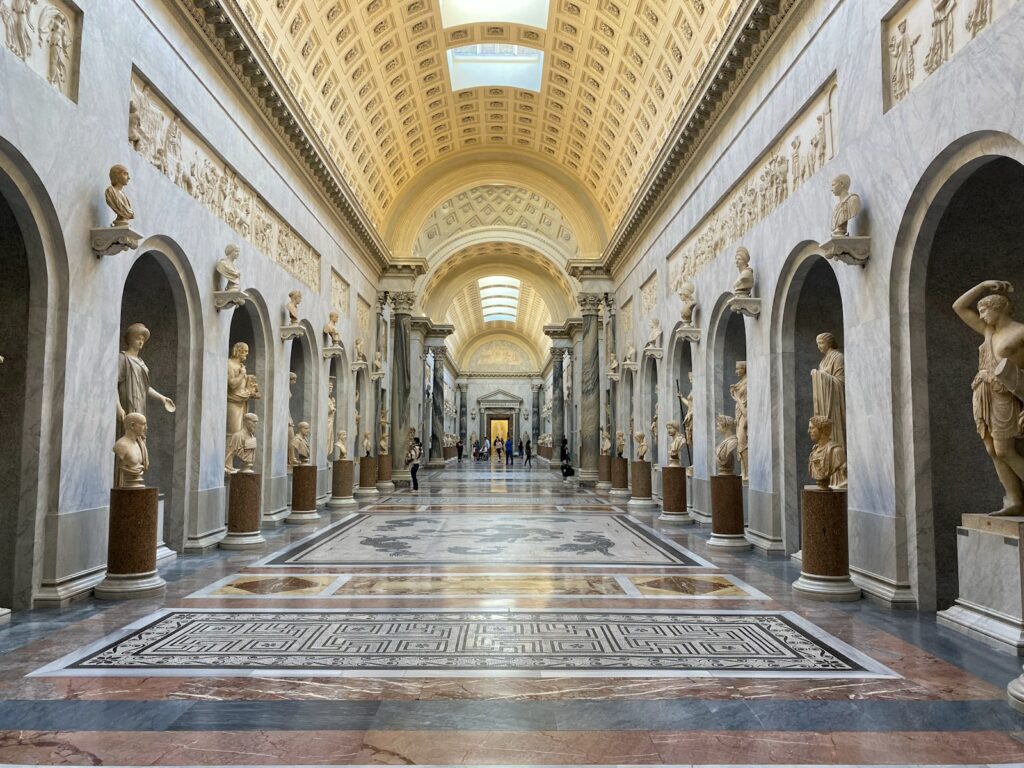
The Vatican Museums are a must-visit destination for anyone traveling to Vatican City. As one of the world’s largest and most renowned art collections, these museums offer a truly immersive experience into the rich cultural and artistic history of the Roman Catholic Church.
Comprised of 54 galleries, the Vatican Museums house over 20,000 works of art, spanning from ancient civilizations to the Renaissance period and beyond. The vastness of the collection is truly awe-inspiring, and visitors can easily spend hours exploring the various galleries and admiring the masterpieces on display.
One of the highlights of the Vatican Museums is the Sistine Chapel, which is located within the Apostolic Palace and is famous for its stunning frescoes, most notably Michelangelo’s iconic ceiling and Last Judgment. Stepping into the Sistine Chapel is like entering a world of divine beauty, where every inch of the ceiling is adorned with intricate details and vibrant colors.
In addition to the Sistine Chapel, the Vatican Museums offer a plethora of other extraordinary artworks. From ancient sculptures and mosaics to Renaissance paintings and tapestries, there is something to captivate every art enthusiast. Some notable works include the Laocoön and His Sons, the Apollo Belvedere, the Raphael Rooms, and the Gallery of Maps.
Not only are the artworks themselves remarkable, but the architecture and decor of the museums are also breathtaking. The galleries are adorned with intricate frescoes, grand staircases, and ornate ceilings, creating a truly opulent atmosphere as you wander through the halls.
Visiting the Vatican Museums can be an overwhelming experience due to the sheer volume of artworks on display. It is advisable to plan your visit in advance and prioritize the specific areas or masterpieces you wish to see. Guided tours are also available, providing insightful commentary and ensuring you don’t miss any important highlights.
It’s important to note that while entry to Vatican City is free, there is an admission fee to enter the Vatican Museums. However, the experience is well worth the cost, as it grants you access to some of the world’s most significant and breathtaking artworks.
Saint Peter’s Square – The iconic piazza designed by Bernini
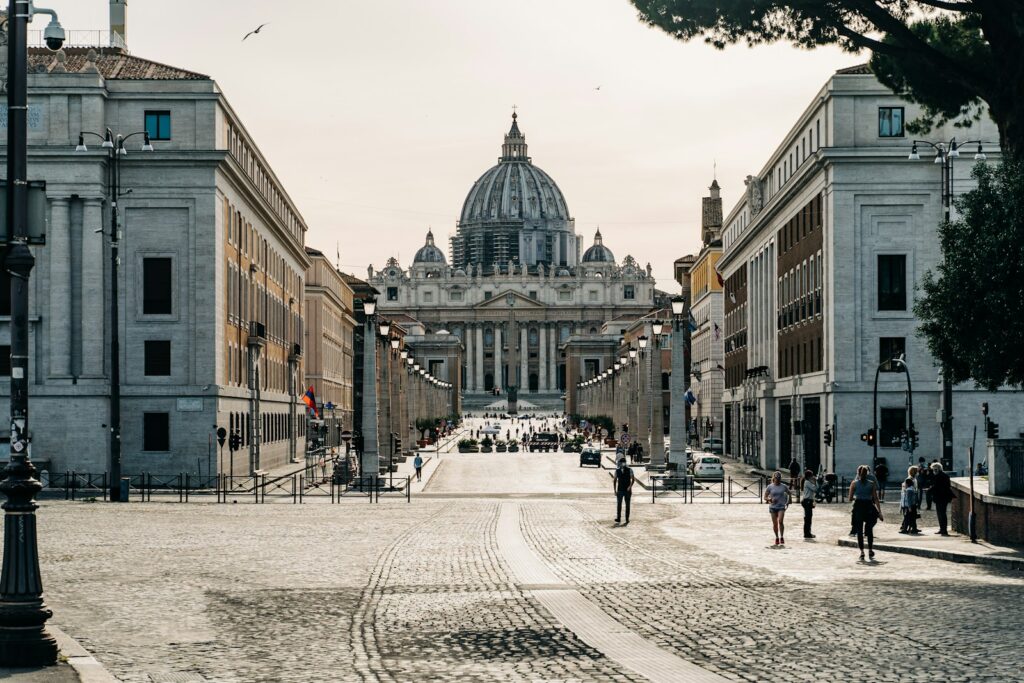
At the heart of Vatican City lies Saint Peter’s Square, a magnificent piazza that captivates visitors with its grandeur and historical significance. Designed by the renowned Roman artist Gianlorenzo Bernini in 1656, this iconic square is a testament to his genius and remains one of Italy’s most well-known squares.
With its elliptical shape and stunning architectural features, Saint Peter’s Square is a sight to behold. As you approach the square from Rome’s Via della Conciliazione, you are greeted by the awe-inspiring Saint Peter’s Basilica at the far end. The square itself unfolds before you, encompassing a vast space where tourists and locals alike gather to take in its beauty.
One of the most striking features of Saint Peter’s Square is the colonnades that encircle it. Adorned with 140 statues, these colonnades create a sense of grandeur and majesty, inviting visitors to explore further. The colonnades also serve a practical purpose, as they help to manage the flow of people entering and exiting the square.
In the center of the square, you will find two large fountains that add to its splendor. These fountains not only provide a refreshing sight but also contribute to the overall harmony and balance of the square.
One cannot overlook the towering Egyptian obelisk that stands proudly in the center of Saint Peter’s Square. Dating back to 37 AD, this ancient monument adds a touch of history and mystique to the piazza, reminding visitors of the rich heritage of Vatican City.
Saint Peter’s Square is not just a place of architectural marvels but also a hub of activity. Lines often form here as tourists wait to enter Saint Peter’s Basilica, one of the most revered religious sites in the world. The square also serves as a venue for various ceremonies and events, drawing crowds from all corners of the globe.
Saint Peter’s Square is more than just a square; it is a symbol of faith, artistry, and the enduring legacy of Vatican City. Whether you are admiring its architectural splendor, capturing Instagram-worthy photos, or immersing yourself in its historical significance, a visit to this iconic piazza is an essential part of any Vatican City itinerary.
Vatican Gardens – Beautiful and serene green spaces within the city
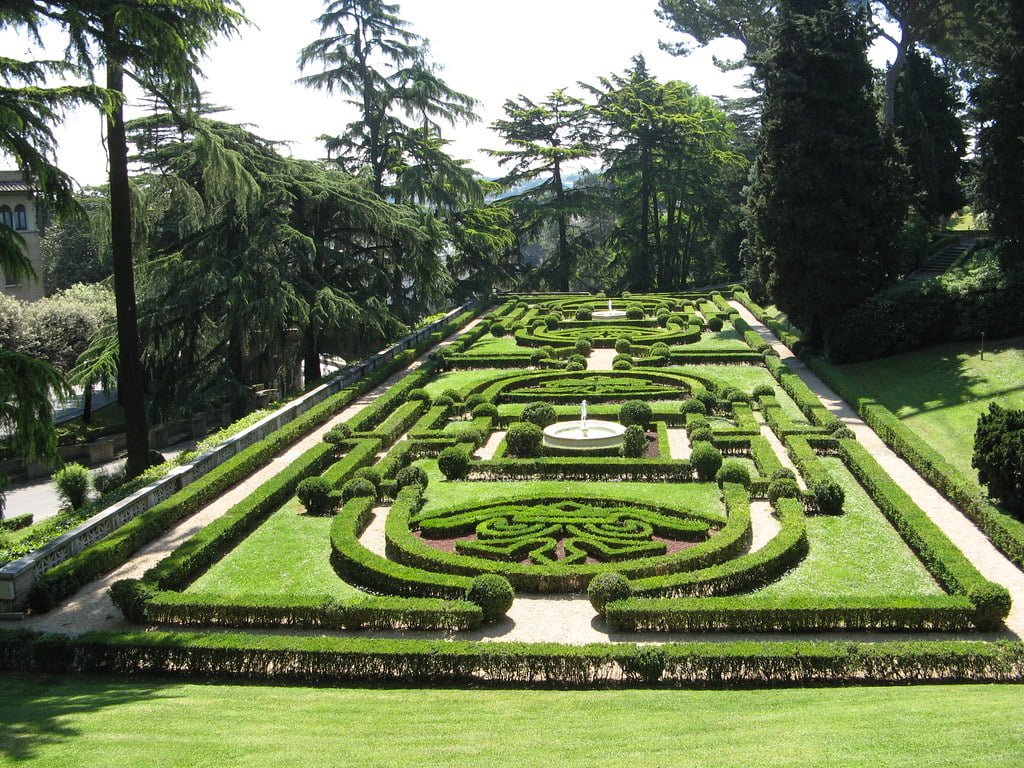
When visiting Vatican City, a must-visit attraction is the Vatican Gardens, also known as the Gardens of Vatican City. These beautiful and serene green spaces cover nearly half of the state, spanning over 23 hectares. Stepping into the Vatican Gardens is like entering an oasis of tranquility amidst the bustling city.
The Vatican Gardens feature a combination of medieval fortifications, monuments, and buildings from the 9th century to the present day. As you explore the gardens, you will be captivated by the opulent fountains, vibrant colored flowers, and magnificent oak trees. The winding paths will lead you through various sections of the gardens, each offering its own unique charm and beauty.
One of the highlights of the Vatican Gardens is the incredible sculptures and artificial grottoes dedicated to Madonna. These artistic creations add a sense of spirituality and reverence to the surroundings, making it a truly special place to visit. The carefully curated collection of sculptures and grottoes pays homage to the rich history and religious significance of Vatican City.
What sets the Vatican Gardens apart is its exclusivity. Only a limited number of visitors are allowed into the gardens each day, ensuring a peaceful and intimate experience for those fortunate enough to explore this hidden gem. This exclusivity adds to the sense of serenity and allows visitors to fully appreciate the natural beauty that surrounds them.
In 2015, Pope Francis made a significant decision to open the Vatican Gardens to the public. Previously, these gardens were reserved for private use. This gesture by the Pope allows visitors from around the world to experience the tranquility and beauty of the Vatican Gardens firsthand. It is a rare opportunity to step into a space that has been enjoyed by popes and dignitaries throughout history.
Vatican Necropolis – An ancient burial ground beneath Saint Peter’s Basilica
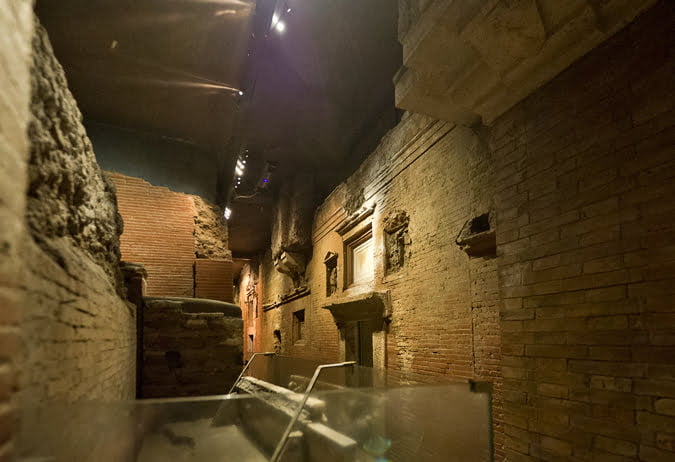
Located beneath the iconic Saint Peter’s Basilica in Vatican City lies the Vatican Necropolis – a hidden treasure trove of history and spirituality. This ancient burial ground is a testament to the rich and diverse past of the Vatican, offering visitors a glimpse into the lives and final resting places of important figures from the Roman era to the present day.
The Vatican Necropolis, also known as the Vatican Scavi, was excavated between 1940-49 under the orders of Pope Pius XII. The primary motivation behind the excavation was to find the burial site of St. Peter, one of the Twelve Apostles and the first pope. This search led to the discovery of an elaborate Roman cemetery, complete with intricate tombs and mausoleums dating back to the 1st and 4th centuries.
One of the main attractions of the Vatican Necropolis is its alleged connection to St. Peter. According to tradition, St. Peter was buried in this holy site, making it a place of immense significance for Christians worldwide. Visitors have the opportunity to walk through the corridors that were once frequented by the early Christians, gaining a deeper understanding of their faith and history.
As you explore the Vatican Necropolis, you will encounter at least fifteen mausoleums, each more ornate and beautiful than the last. These mausoleums offer a glimpse into the lives of the individuals buried here and serve as a poignant reminder of the fleeting nature of life. The well-preserved corridors and tombs provide a unique insight into the burial practices and beliefs of ancient Rome, making it a fascinating experience for history enthusiasts.
Beyond its historical significance, the Vatican Necropolis also showcases the artistic prowess of the time. Elaborate sculptures, artificial grottoes dedicated to the Madonna, and other artistic elements adorn this underground burial ground, adding an extra layer of beauty and intrigue to the site. Wandering through the winding paths, visitors will be captivated by opulent fountains, vibrant flowers, and magnificent oaks, creating a serene and contemplative atmosphere.
The Vatican Library – Housing a vast collection of historical and religious texts

The Vatican Library, located within Vatican City, is renowned for housing one of the world’s most extensive collections of historical and religious texts. With a history dating back to its founding in 1450, the library has amassed an impressive collection of manuscripts, books, and incunabula, making it a treasure trove for scholars, researchers, and book enthusiasts alike.
The library’s collection is truly remarkable, boasting over 80,000 manuscripts, 25,000 medieval hand-written books, and an astounding 7,000 incunabula, which are books printed before the year 1501. These ancient texts offer invaluable insights into various subjects, ranging from theology and philosophy to history and science. Scholars from all over the world flock to the Vatican Library to study and analyze these precious artifacts, contributing to the advancement of knowledge in numerous fields.
One of the most striking features of the Vatican Library is its magnificent architecture and ornate frescoes. The library’s reading rooms and halls are adorned with intricate artwork, creating a captivating ambiance that adds to the overall experience of visiting this historic institution. The 70-meter-long hall, built by renowned architect Domenico Fontana, is particularly awe-inspiring, showcasing some of the library’s most precious treasures.
It’s worth noting that the Vatican Library is not only a repository of ancient texts but also plays a vital role in preserving and restoring these valuable manuscripts. The library employs skilled librarians and restoration experts who work tirelessly to conserve and protect the collection for future generations. Through meticulous restoration projects, they ensure that these historical and religious texts continue to be accessible and in the best possible condition.
Visiting the Vatican Library is a unique opportunity to immerse oneself in the rich tapestry of human knowledge and history. Whether you are a scholar pursuing academic research or a curious visitor with a passion for books, the library offers a mesmerizing glimpse into the past. The hallowed halls and the sheer breadth of its collection make it a must-visit destination for anyone with an appreciation for the written word.

